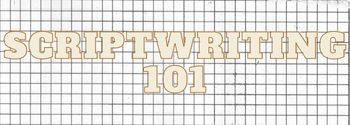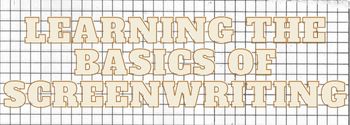Indention detection methods have long been used by historians, forensic experts, and archeologists to uncover hidden information. Whether it be through revealing imprints, depicting hidden indentations, discovering etched inscriptions, or other techniques, these methods have proven invaluable in deciphering historical documents and artifacts. In this article, we will delve into the various indentation detection methods, such as the "revealing imprints technique" and "disclosing recessed writing," and explore their importance in unlocking sunken engravings and other hard-to-see imprinted impressions.
Indentation Detection Methods: A Closer Look at Revealing Hidden Writing
There are many instances where important information may be hiding just below the surface. This is especially true when it comes to written documents, where letters, words, and even entire sentences can be hidden by indentations. Whether it be a diary entry from a hundred years ago or confidential notes on a legal document, these hidden indentations can hold valuable insights and secrets. But how do we uncover them? In this article, we will explore various techniques for detecting and revealing indentations, also known as imprints, in written materials.
The Revealing Imprints Technique
- Step 1: Obtain a light source such as a flashlight or desk lamp.
- Step 2: Place the light source at a 45-degree angle above the document you want to examine.
- Step 3: Slowly move the light source across the surface of the document, paying attention to any changes in shadows or light reflection.
- Step 4: Look for any areas where the light appears to be distorted or where there are variations in light intensity.
- Step 5: These distorted areas can indicate the presence of indentation or imprinted writing. Take note of the location and try to decipher the hidden text.
This technique works because the light source highlights the differences in pressure applied to the paper by the writing instrument. The areas where the ink has been pressed into the paper will create a shadow or reflect light differently, making them stand out from the rest of the document.
Depicting Hidden Indentations
Another effective method for revealing hidden indentations is through the use of a graphite pencil. This technique is commonly used in forensic analysis to uncover imprints on documents that have been overwritten or altered.
- Step 1: With the document placed on a flat surface, gently rub the side of a graphite pencil over the surface of the paper.
- Step 2: Continue rubbing until the entire document surface is covered in graphite.
- Step 3: Take a piece of tracing paper and place it over the graphite-covered document.
- Step 4: Use a pen or pencil to trace over any areas where the original writing is visible.
- Step 5: The tracing paper will pick up the graphite from the indented letters, making them visible on the tracing paper.
This technique works because the graphite fills in the indentations and transfers the writing onto the tracing paper. This allows for a clearer and more defined image of the hidden indentations to be revealed.
Discovering Etched Inscriptions
When it comes to uncovering imprinted writing on hard surfaces such as wood or metal, a different approach is needed. One effective method for detecting indentations on hard surfaces is the use of optical profilometry, also known as white light interferometry.
- Step 1: Set up an optical profilometer, which uses a white light source and a high-resolution camera.
- Step 2: Place the document or object to be examined under the camera.
- Step 3: The camera will capture the surface of the object, including any indentations.
- Step 4: Software analyzes the captured image and creates a 3D rendering of the surface, allowing for a closer examination and enhanced visibility of the indentations.
This method works by measuring the light reflected from the surface of the object and analyzing the changes in height and depth caused by indentations. These variations in the surface are then visually displayed through the 3D rendering, making it easier to detect hidden inscriptions.
Uncovering Embossed Text
Embossing is a process that involves creating raised or indented patterns on paper or other materials. These patterns can be seen and felt on the surface of the material, but what about any imprinting that may have occurred on the back side of the embossed surface?
To reveal any hidden indentations on an embossed surface, a method called pressure-sensitive film analysis can be used.
- Step 1: Obtain a piece of pressure-sensitive film, which is a thin layer of plastic that changes color when pressure is applied to it.
- Step 2: Place the film over the embossed surface, with the colored side facing the surface.
- Step 3: Gently rub the surface of the film with your finger or a blunt object, applying light pressure.
- Step 4: Any areas where the embossed surface has caused pressure on the film will leave a colored impression, revealing the hidden indentations.
This technique works by using the pressure-sensitive film to transfer the indented surface pattern onto its own surface, making it visible to the naked eye.
Which Technique Can Reveal Indented Writing?
Each of the methods mentioned above has its own advantages and may be more suitable for certain situations. The revealing imprints technique is a simple and low-cost option that can be used on most paper documents. Depicting hidden indentations with a graphite pencil is effective for handwritten documents but may not work as well on typed or printed materials.
Discovering etched inscriptions with optical profilometry is best suited for hard surfaces, while pressure-sensitive film analysis is ideal for uncovering embossed text. Ultimately, the most effective method will depend on the type of document or material you are trying to examine.
So, whether you are a forensic investigator trying to uncover hidden clues or a historian deciphering ancient manuscripts, these indentation detection methods can reveal invaluable insights and secrets that were once hidden away.
Conclusion
In this article, we have explored various techniques for detecting and revealing indentations in written materials. From using light sources and pencils to advanced technology like optical profilometry and pressure-sensitive film analysis, each method has its own strengths and can be used in different scenarios. The key is knowing which technique to use for the specific document or material at hand.
Whether it be revealing sunk-in calligraphy or exposing imprinted impressions, these methods allow us to uncover valuable information that was once concealed. So next time you come across a document with hidden indentations, remember these techniques and you may just uncover a hidden treasure of knowledge.
For more tips and tricks on office supplies and organization, check out 5 Effective Shipping Solutions for Essential Office Supplies.
In conclusion, the development of advanced indentation detection methods has revolutionized the field of forensic investigations, allowing for the uncovering of critical evidence that was once thought to be lost. Techniques such as the revealing imprints technique, depicting hidden indentations, and discovering etched inscriptions have proven to be invaluable in solving complex cases and providing justice for victims. With the ability to expose imprinted impressions, detect engraved imprints, and unveil sunk-in calligraphy, these methods have opened up a whole new world of possibilities for researchers and investigators. As technology continues to advance, we can expect even more innovative techniques to be developed, further enhancing our ability to illuminate sunken engravings and disclose recessed writing. The future of indentation detection looks bright, and with it, the truth will continue to be uncovered and brought to light.

